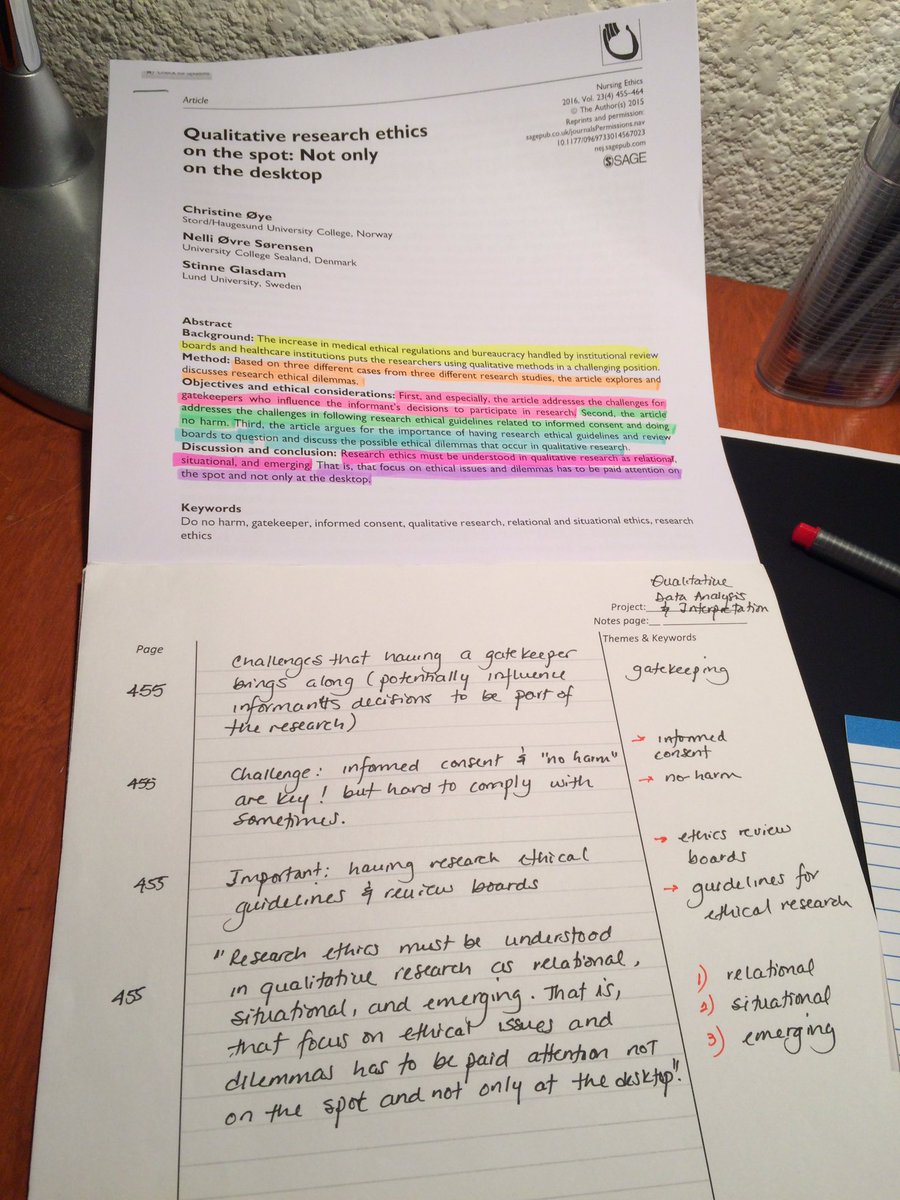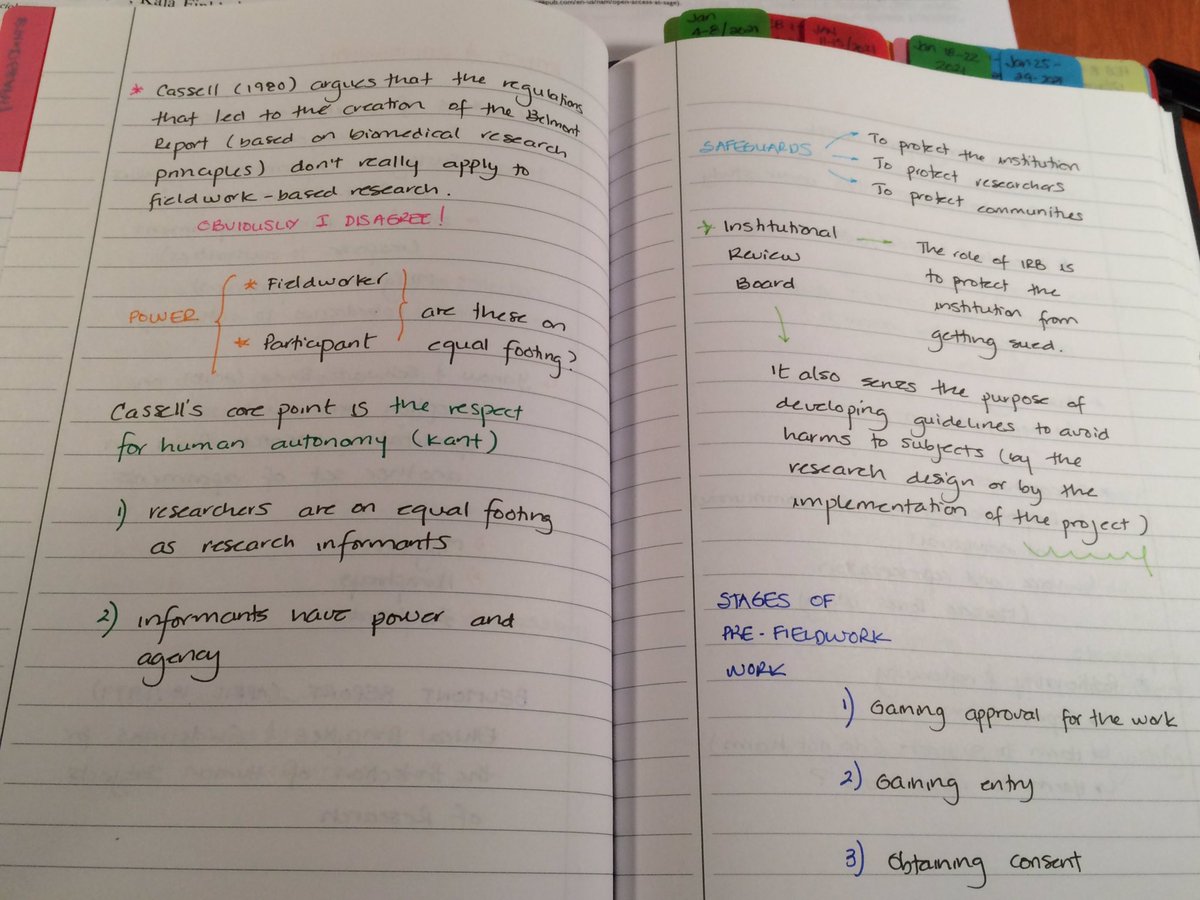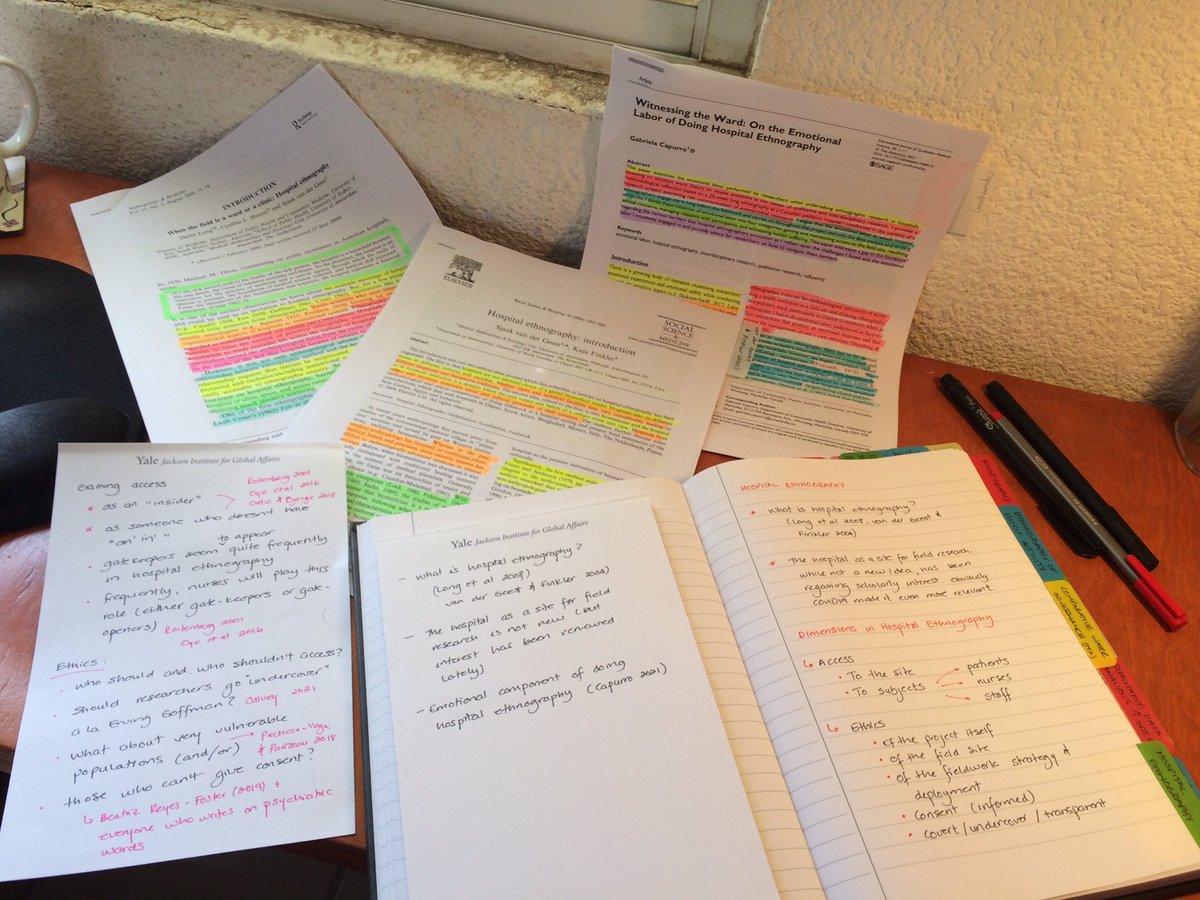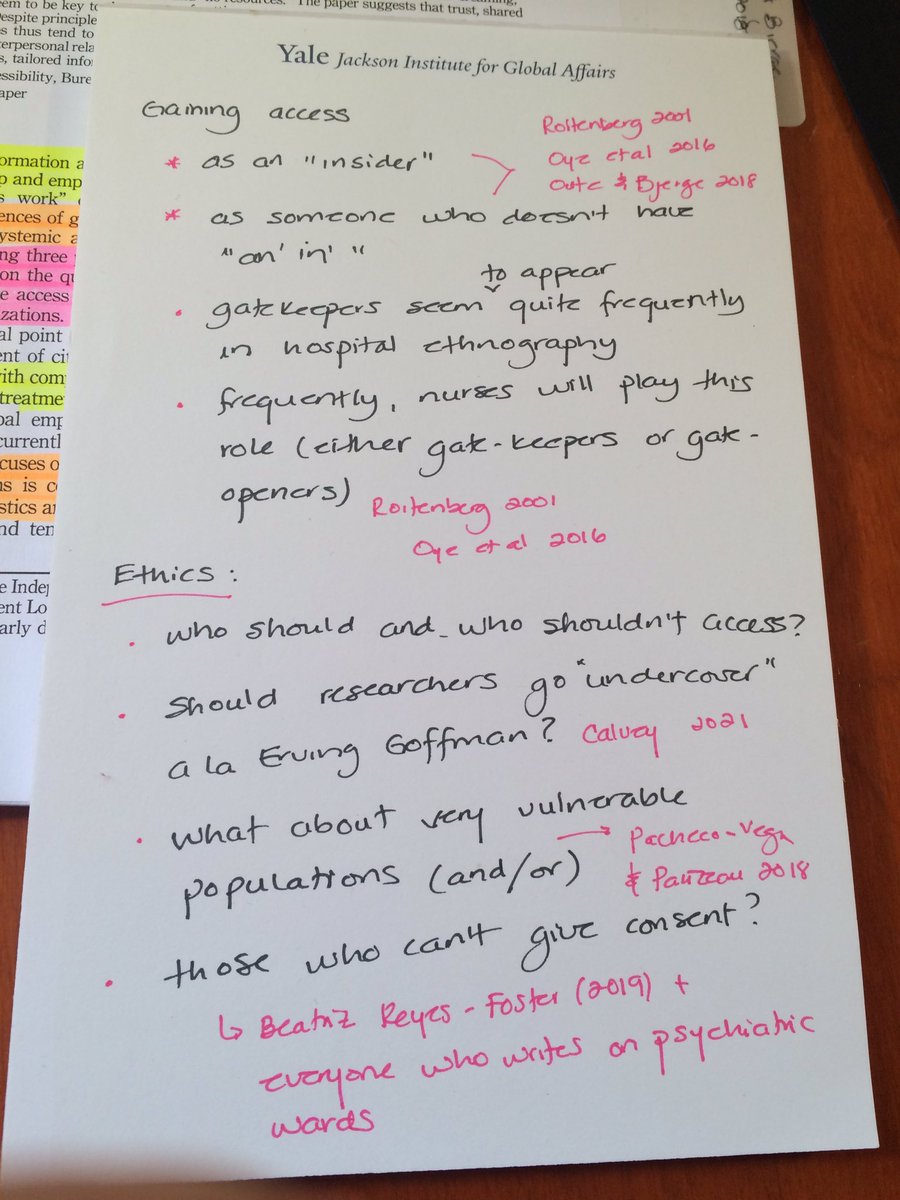
Hilo para mi Twitter hispanoparlante: me han preguntado en cursos y talleres y mis estudiantes cómo es que decido si tomo apuntes en mi Libreta de Todo (Everything Notebook), Nota Cornell, una Ficha de Trabajo o en mi Excel Dump de Síntesis Conceptual. Mis reglas son flexibles.
En general, TODAS mis lecturas pasan a un renglón del Excel Dump, aunque sea solamente mis apuntes en los márgenes de la Lectura Rápida AIC.
El asunto se complica cuando noto que un artículo o capítulo lo tengo que leer más a profundidad. Este es un ejemplo:
El asunto se complica cuando noto que un artículo o capítulo lo tengo que leer más a profundidad. Este es un ejemplo:

Mi método AIC (todos estos posts, están en inglés): raulpacheco.org/2021/01/skimmi…
Mi método de la Síntesis Conceptual (Excel Dump) raulpacheco.org/2016/06/synthe…
Mi proceso sistemático (AIC+CSED) raulpacheco.org/2017/12/carvin…
Este artículo es sobre ética de la investigación cualitativa.
Mi método de la Síntesis Conceptual (Excel Dump) raulpacheco.org/2016/06/synthe…
Mi proceso sistemático (AIC+CSED) raulpacheco.org/2017/12/carvin…
Este artículo es sobre ética de la investigación cualitativa.
Dado que este articulo es sobre un tema de los míos (ética en la investigación cualitativa) es obligatorio que le preste más atención que un simple barrido AIC.
Por lo mismo, el primer paso es una Nota Cornell. Noten que uso tanto parafraseo como citas textuales c/página.
Por lo mismo, el primer paso es una Nota Cornell. Noten que uso tanto parafraseo como citas textuales c/página.

Al revisar los encabezados y filtrarlos usando los tres temas que las autoras indican como céntrales me doy cuenta que no hay coincidencia uno-a-uno (directa). Dos encabezados de la sección del análisis son sobre principios éticos y uno sobre comités de ética. PERO los casos no. 







Al leer el artículo con detenimiento me doy cuenta que no existe una coincidencia directa entre los casos empíricos que analizan las autoras y el análisis y conclusiones a los que llegan. Esto es frustrante porque no puedo usar los encabezados para guiar mi lectura y apuntes.
Solución: leer cada caso de estudio a profundidad y producir una Ficha de Trabajo. Como pueden ver, aquí yo resumo todo lo que aprendí de la lectura profunda del primer caso de estudio en UNA Ficha de Trabajo. 

Hasta aquí solamente he discutido dos soportes análogos (Ficha de Trabajo, Nota Cornell). Me falta uno de los tres que más utilizo: el Everything Notebook (la Libreta de Todo). Este hilo explica el método:
https://twitter.com/raulpacheco/status/1164244520894119936
Ahora bien, la pregunta de los 64,000: qué cosas sí transcribo a la Libreta de Todo, y cuáles no? Esta es la regla que les parece más rara a mis amigos. Yo transcribo mis notas “en limpio”. Es decir, lo que quiero que quede “para la posteridad”. Pondré un ejemplo aquí:
Aquí muestro unas notas en borrador sobre varios temas y subtemas: etnografía, trabajo de campo, etnografía hospitalaria, evaluaciones etnográficas rápidas, Erica, trabajo emocional.
Estoy asociando conceptos con autores y autoras.


Estoy asociando conceptos con autores y autoras.



Para bien o para mal, desde niño me acostumbraron a que en mis libretas siempre lo que quedaba era “lo que estaba en limpio”. Entonces en mi Libreta de Todo capturo mis apuntes pero ya bien pensados, analizados y estructurados (ver mis notas sobre etnografía aquí en la foto) 

Me queda perfectamente claro que mis notas en borrador podrían perfectamente quedarse en mi Libreta de Todo como notas “en limpio”. Pero todavía no “digiero” bien el material y no he decidido totalmente la estructura y secuencia en la que irán. Por eso los dejo en borrador.
Aquí pueden ver cómo mis notas en la Libreta de Todo (Everything Notebook) ya no son exactamente las que tengo en borrador. Ya pensé mejor las categorías y lo que voy a dejar transcrito.
Transcribir apuntes me facilita pensar lo que realmente quiero registrar permanentemente.
Transcribir apuntes me facilita pensar lo que realmente quiero registrar permanentemente.

• • •
Missing some Tweet in this thread? You can try to
force a refresh









